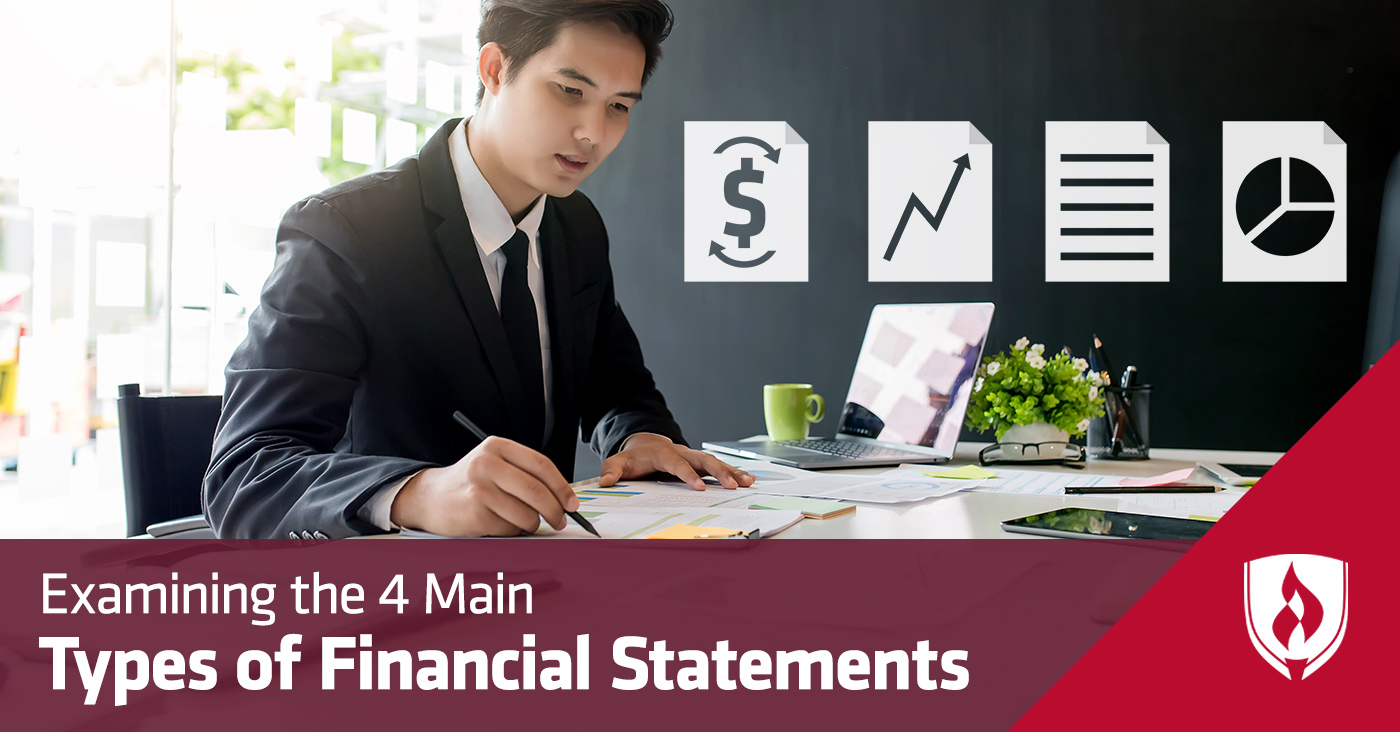
Your ears tend to perk up at any mention of money and investing. You’ve always taken an interest in personal finance, but sometimes you have trouble following along with the conversation—especially when the topic turns toward business finance. Balance sheets, equity, cash flow—it’s like they’re speaking a different language!
The financial industry comes with its own vocabulary that can be confusing to the uninitiated. We’re breaking down the jargon by giving you an in-depth explanation of four common types of financial statements.
4 Common types of financial statements to know
Ready to get on the same page as the financial pros? Read on to learn more about the purpose of four common types of financial statements:
- Balance sheets
- Cash flow statements
- Income statements
- Statements of changes in shareholder equity
1. What is a balance sheet?
Balance sheets use a basic formula to report a business’s assets (things it owns, such as property and cash on hand) versus liabilities (debts and expenses) and shareholder investments. Businesses rely on balance sheets to gauge their overall financial health at any given time since it provides a snapshot of how much they own versus how much they owe.
For example, a company that is seeking a business loan will have to present a current balance sheet to potential lenders. Banks can use the balance sheet to determine the company’s debt-to-equity ratio, which predicts if the company is a high- or low-risk investment.
Balance sheets don’t offer enough data to show financial trends over a long period of time, so they’re often paired with other “core statements” (cash flow and income) to give a broader picture of a company’s financial state.
2. What is a cash flow statement?
Cash flow is the movement of money in and out of a business every month, so a cash flow statement is the report that shows this movement. Positive cash flow is when more money is coming into a company than going out; negative cash flow is the opposite.
This movement of money can be more complicated than you might expect. Imagine a seasonal business like landscaping. The business owner needs to keep a close eye on cash flow statements to make sure that they save enough during the positive cash flow months to cover their expenses during leaner times, when cash flow might be negative. Other industries, like construction, may need to have enough cash on hand to pay for expensive building materials when customers won’t be billed until months later.
Cash flow statements are a good indicator of overall business health. If a company has a negative cash flow for several months in a row, executives will need to take action to keep the business from failing, such as cutting expenses, making more sales, increasing prices or even opening a business line-of-credit loan to help with temporary cash flow problems.
3. What is an income statement?
Income statements—sometimes called profit and loss or P&L—show a breakdown of a company’s earnings and expenses in order to see if it turned a profit. These reports look at all of a company’s revenue streams during a certain time period, including the sale of a product or service, the sale of assets, or dividends earned from an investment. It compares these revenues to expenses, like rent, employee wages and taxes.
At the end of an income statement is a company’s net income, which is the amount earned after subtracting expenses and other losses. This number is vitally important for businesses. A company may have high revenues, but if its expenses are also high, the income statement will reveal that it’s not making much of a profit—or no profit at all.
Income statements join balance sheets and cash flow statements as a core financial statement that investors, banks and company executives want to keep a close eye on. Income statements help executives make strategic decisions, such as which products to stop offering or which areas to focus on developing.
4. What is a statement of changes in shareholder equity?
Shareholder equity is the amount of money that would be given to shareholders—anyone who owns part of the company—if all of the business’s assets were sold and their debts were paid off. A statement of changes in shareholder equity is most often used for publicly held companies that have many shareholders who own stock.
As you might have guessed, this type of financial statement shows any changes in shareholder equity over a certain period of time. Changes in shareholder equity can occur for a number of reasons, including an increase or decrease in net income or adjusting the value of the company’s assets, like land or machinery.
Stock owners should pay careful attention to this financial statement. It provides insight into how their investment is doing so they can decide if they want to buy or sell their stocks. Financial advisors also monitor these statements so they can make wise investments on behalf of their clients.
Pursue your passion for finance
Now that you’re clear on these common types of financial statements, you’re itching for even more inside knowledge about the finance world. Earning a degree in finance is one way to satisfy your thirst to know more!
Your passion for all things finance is one sign that you should consider pursuing a finance degree. Find out if this is the right path for you with our article, “9 Signs You Have What It Takes to Major in Finance.”




